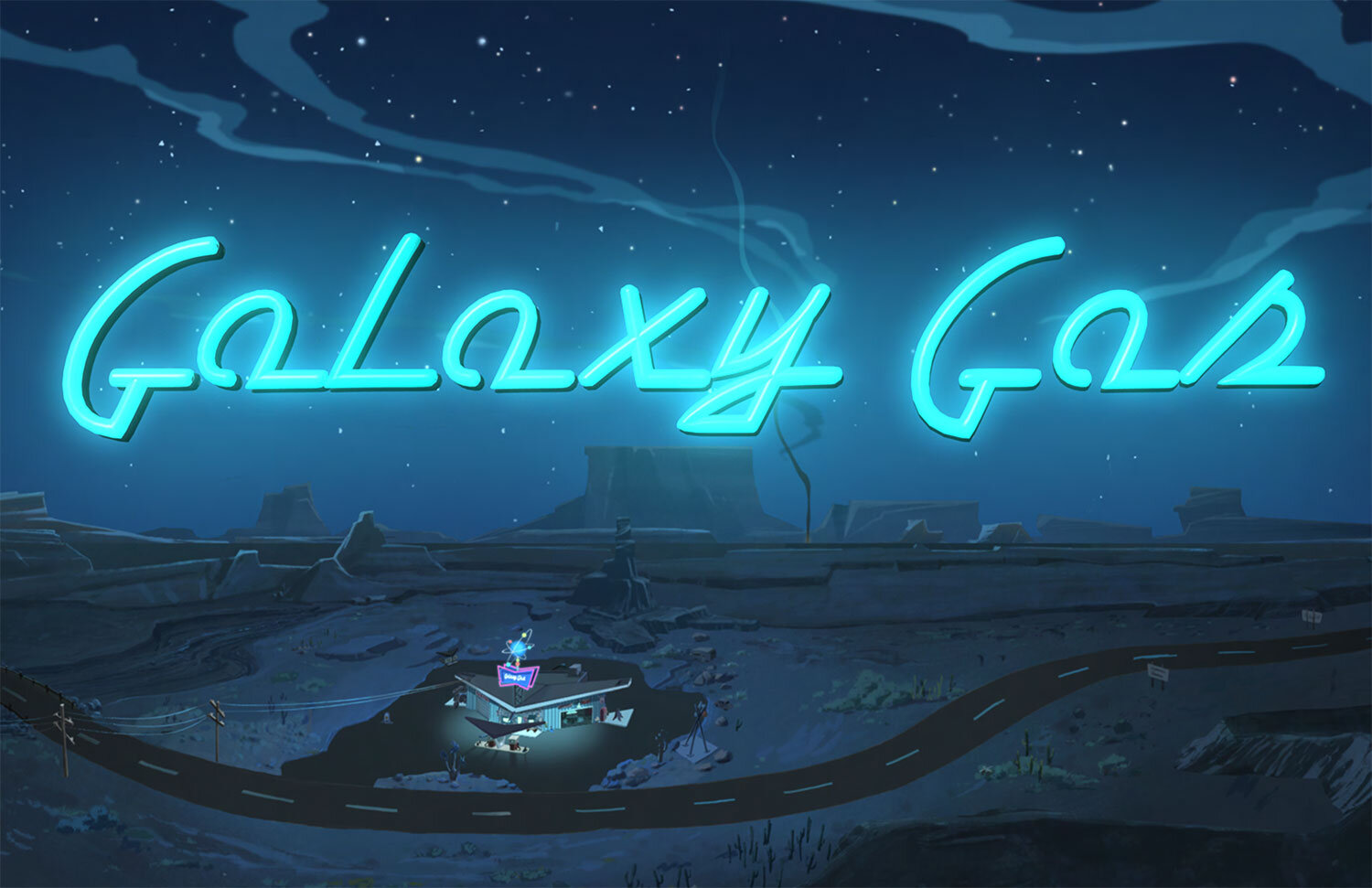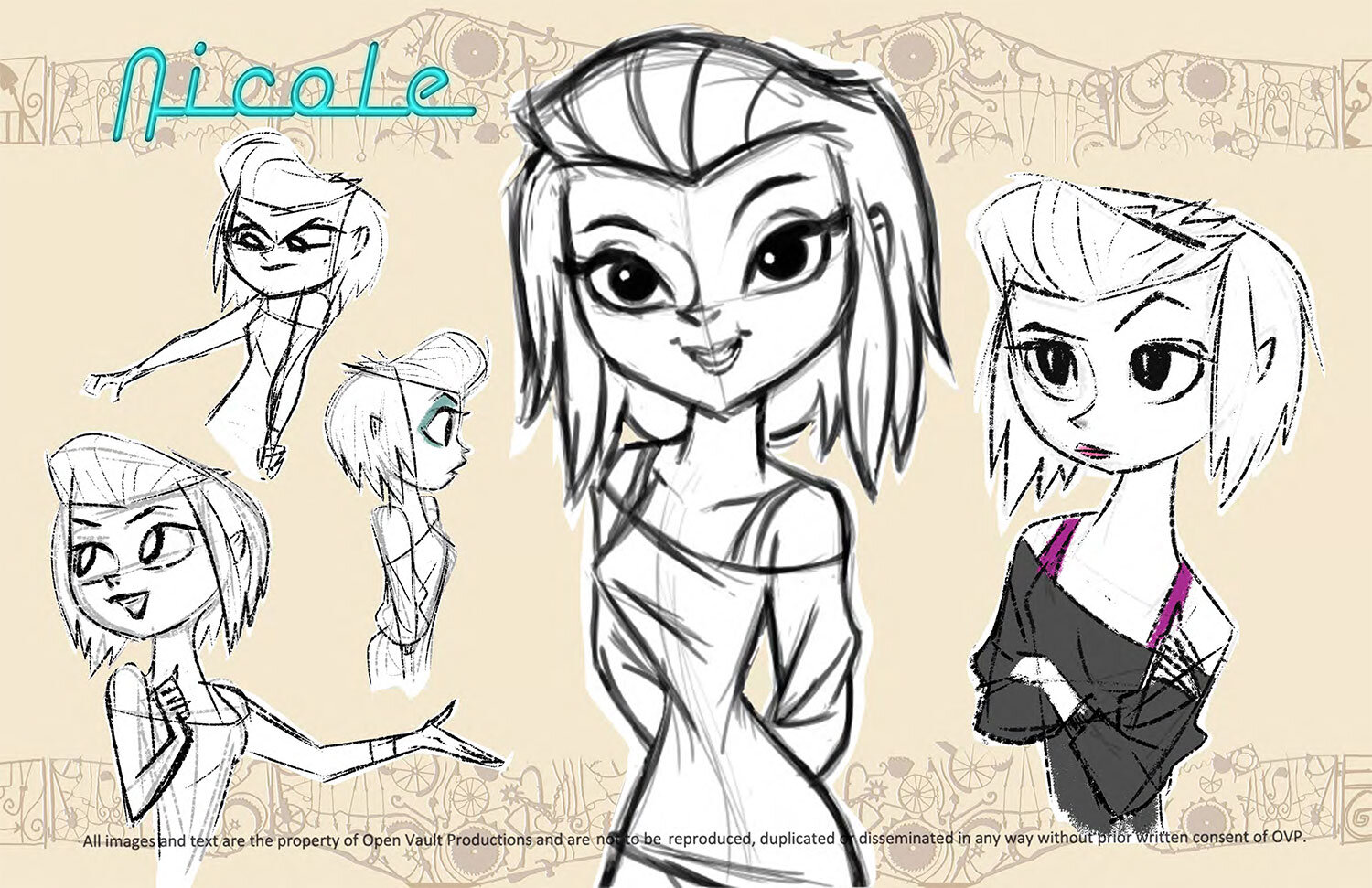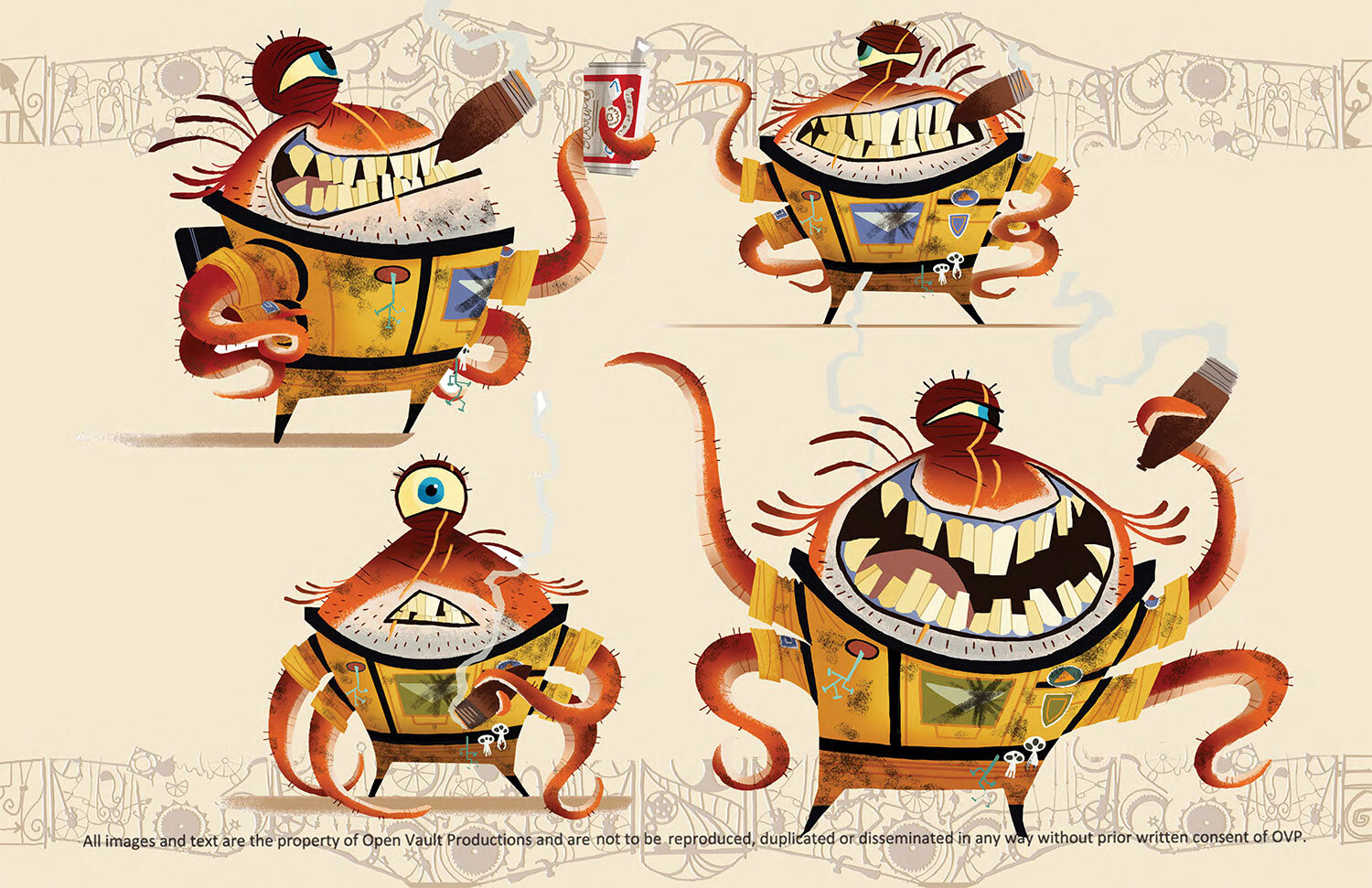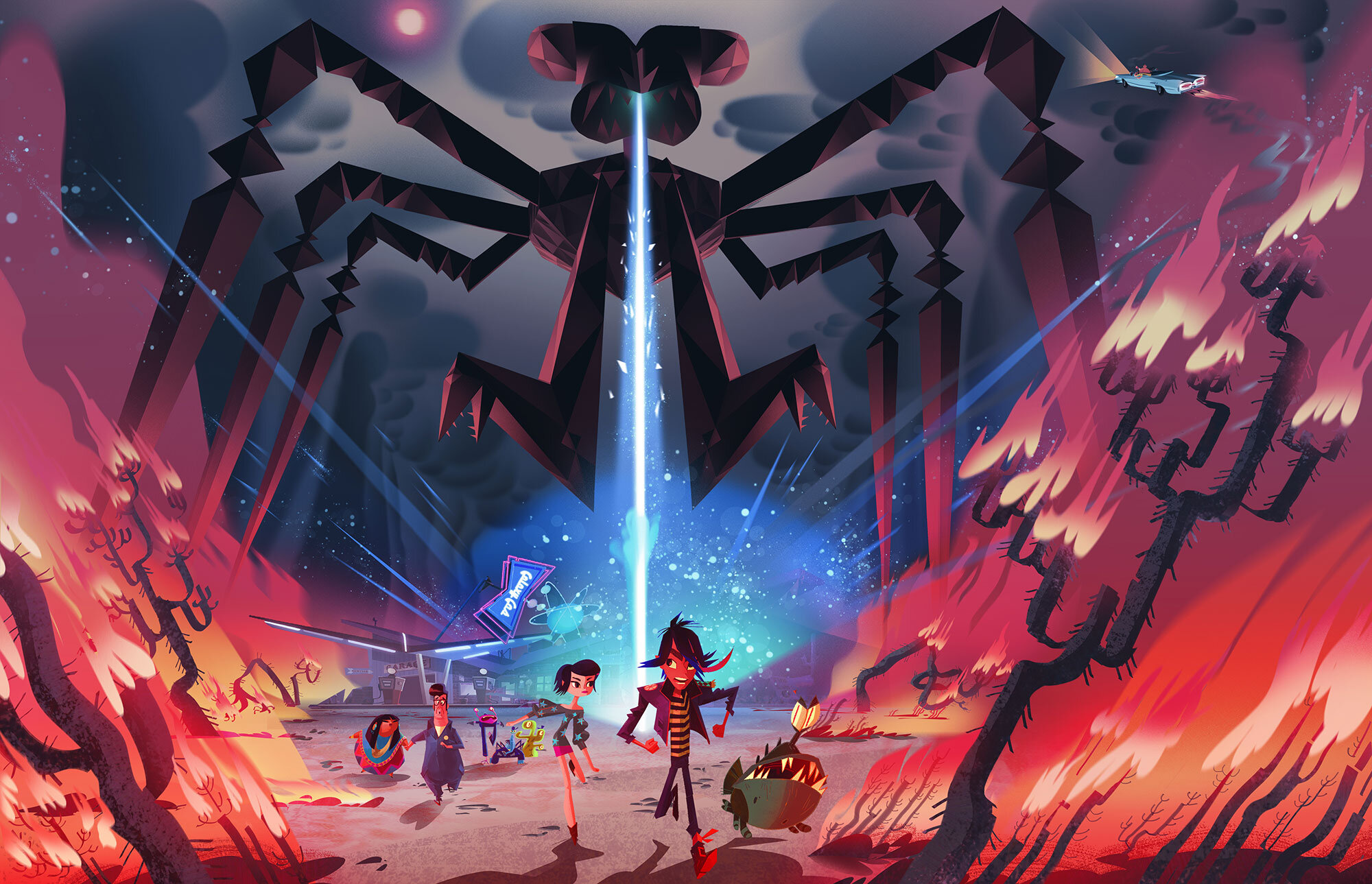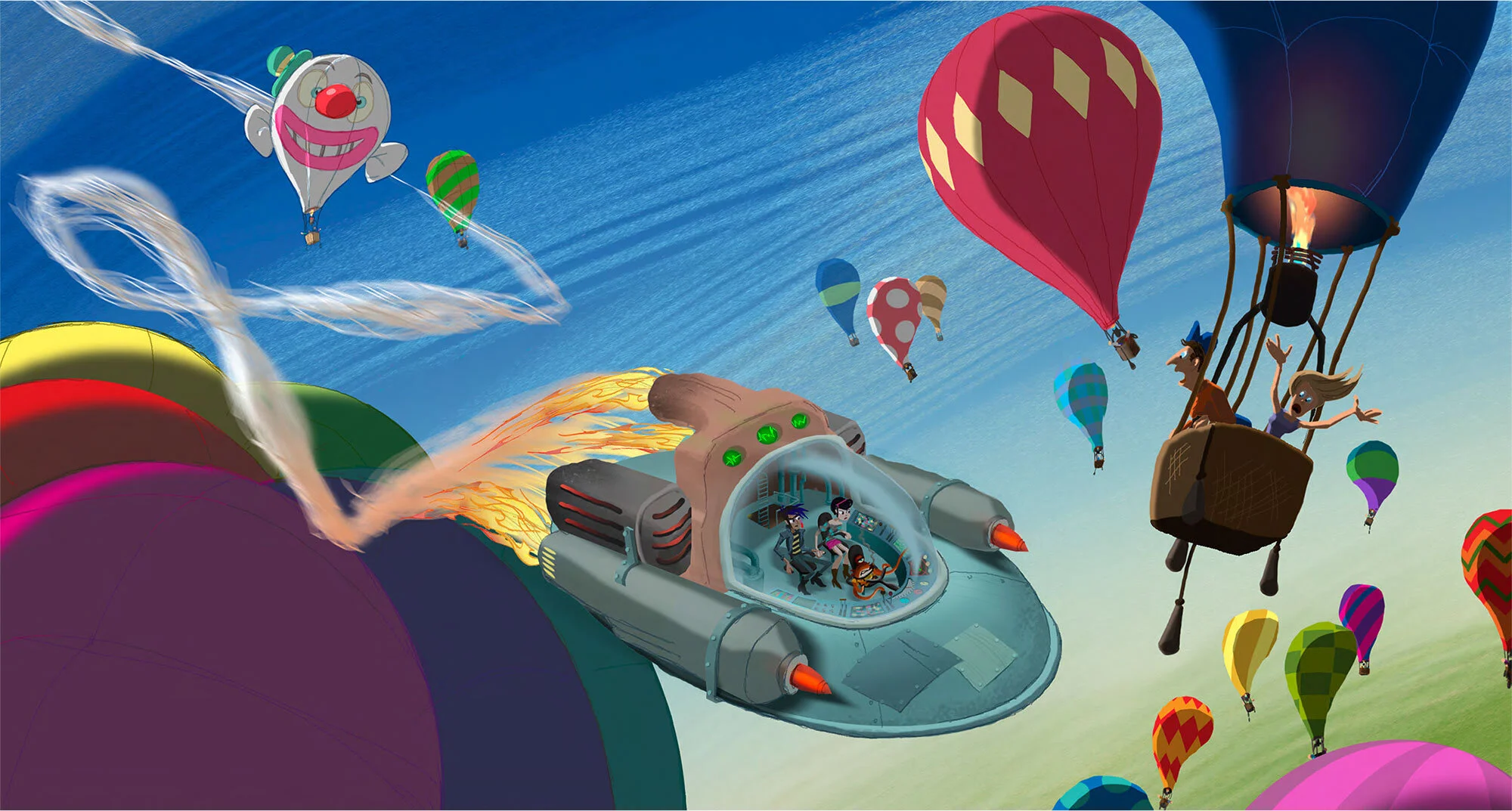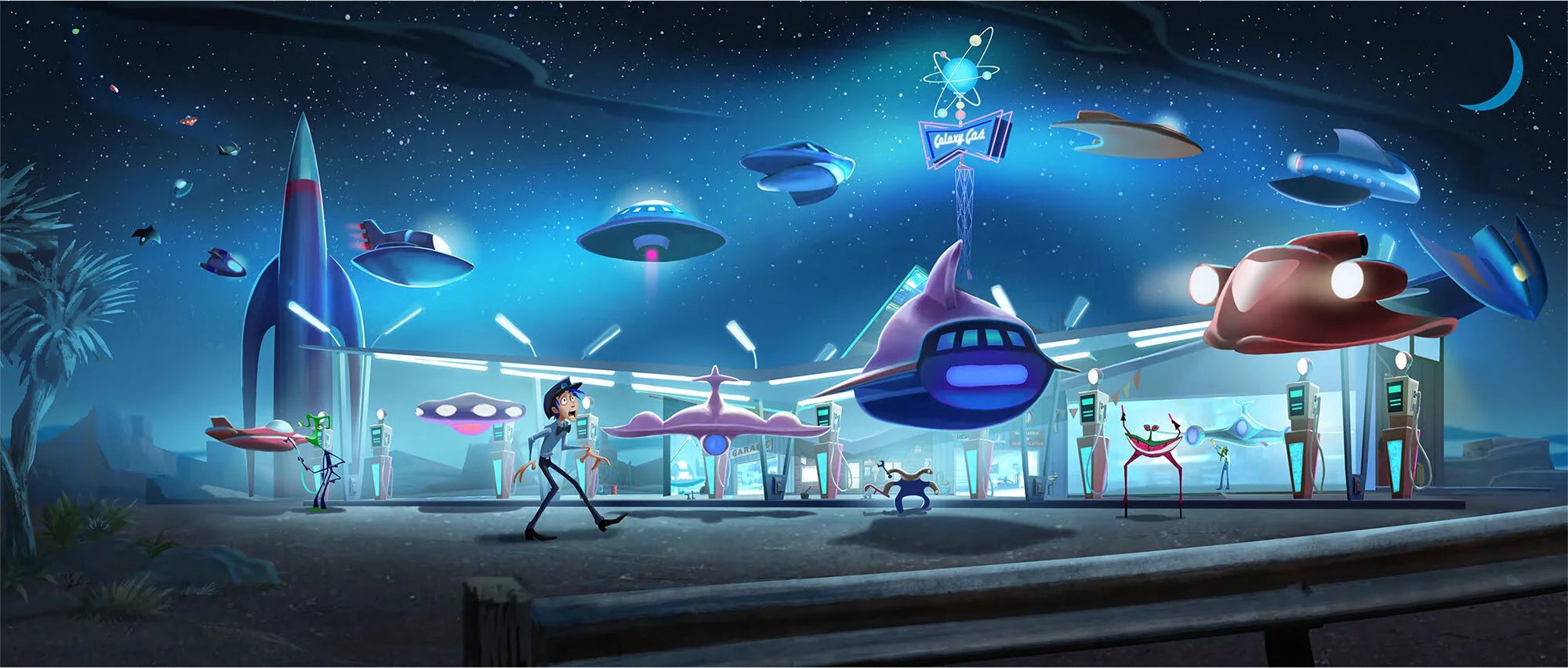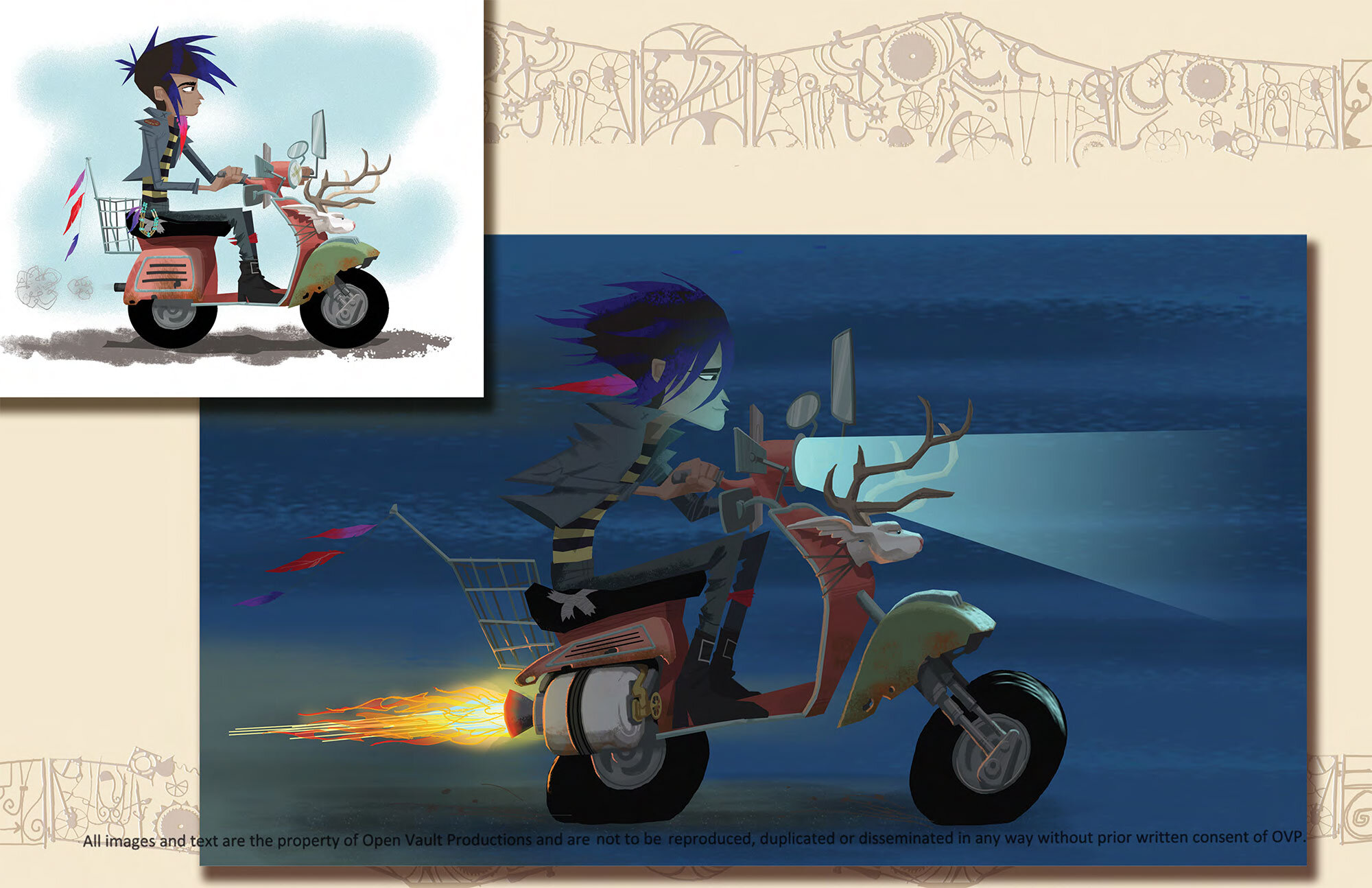Cool Sizzle Reel for GALAXY GAS, an Unproduced Sci-Fi Animated Film From the Director of Disney's BEAUTY AND THE BEAST
Years ago, the director of Disney’s Beauty and the Beast, Hunchback, and Atlantis, Kirk Wise, brought together an all-star team of Disney animation veterans to develop a sci-fi adventure film titled Galaxy Gas. This would have been a hand-drawn 2D animated film and as the project “came within inches of starting full pre-production” before it eventually fell apart.
A trailer/sizzle reel for the film was created in 2014 to show to potential partners and investors, and it was never intended to see the light of day. But producer Craig Peck decided to share it now, telling Cartoon Brew, “If this can bring a small amount of joy to people during a difficult time, that would be fulfilling for those of us who worked on it”
Peck reached out to screenwriter Tab Murphy (Tarzan, Atlantis: The Lost Empire, and The Hunchback of Notre Dame) and asked if he had any ideas for a film and he pitched the concept of “a teenager who discovers that his father, who runs a lonely gas station in the New Mexico desert, is actually using it to refuel the spaceships of alien peace-keepers.”
This looks like it would have been an awesome animated film! I love the concept, and this is a film I would have loved to see get made! It’s a shame that it never happened! You can watch the sizzle reel below and then read what Peck had to say about developing the project along with some concept art.
Here’s what Peck has to say about the unproduced film:
After my time in the talent development program at Disney Animation Studios during the production of Winnie the Pooh (2011), I saw that hand-drawn was once again going to take a backseat at the studio and that some of their incredible talent, at the height of their abilities, were going to become available. I felt there was still a meaningful demand for hand-drawn American features.
Also, taking a longer-term view, in order for the next generations to carry on many of the lessons gleaned from the past century of hand-drawn animators, I believed we needed the opportunity to learn directly from the current masters, working alongside them in the thick of production. The plan was to fill half of the crew with veteran artists and the other half with less experienced but passionate artists who could bring their own sensibilities to the show.
Prior to initiating work on the test and script, I took nine months off school to travel the country, raising money to pay for development from individual high-net-worth investors. Once that was complete, we began work on the screenplay, animation tests, and early visual development — all elements we wanted to have in place to secure actor attachments, financing, and distribution. Kirk and I developed the script with Tab while Brian [McEntee] and his team began exploratory artwork.
The script felt like it could organically mix hand-drawn elements while still utilizing cgi for spaceships and other high-tech elements. This aesthetic was intended to separate us from the crowd of mid-range budget independent films while targeting an untapped demographic of audience members. We were working to apply cg textures to hand-drawn characters in a way that would bring more depth to the characters.
We had also converted the animation test to stereo 3d with an incredible studio partner. Our creative leadership had never seen this type of fully fleshed-out hand-drawn integrated into 3d like this, and it excited everyone as to the possibilities. The test was animated on paper, but the feature was going to be animated entirely on Cintiq tablets.
The team set up a weekly “sweatbox” at the Burbank Public Library, up the street from Disney. It was a blast being crammed in a tiny reading room each week with some of the greatest artists in animation, watching Kirk give notes on the team’s work displayed on my laptop. This was very much a guerrilla project made with extraordinarily accomplished filmmakers, many of whom began their careers in a similar setup.
All the artists did their work from home and I worked as the sole production person, handling everything from pencil-testing scenes to attaching actors and distribution. By the delivery of the final materials, over 40 people had contributed in some way to putting this together, from storyboards to final sound mix.
Truthfully, the hand-drawn aspect of this film and the passion that the creators had in seeing it through garnered us a lot of goodwill from financiers, actors, distributors, and other partners that I don’t think we would have seen had this been cgi. Each meeting saw us talk about why we need to propel hand-drawn features forward, why this story was so personal to each of us, and why we were willing to go above and beyond to see it through.
We managed to attach A-list actors, a superstar composer, a movie star as executive producer, a well-known and well-capitalized co-finance company, as well as a top finance/theatrical distribution company — all because people believed in the passion and they themselves had real love of the art form.
The major theatrical distributors certainly showed little interest in releasing a hand-drawn film, but the mid-level distributors who could handle a film of this budget and didn’t need to spend enormous amounts of money in prints and advertising to break even were the ones that we felt were our best shot. Unfortunately, the number of those distributors was extremely low when we brought the project to market, and is even lower today. But luckily it has been replaced with incredible streaming options like Netflix, which released the awe-inspiring Klaus.
We were extraordinarily close to beginning full pre-production. The executives at the finance/distribution company took the full creative leadership team out to celebrate the launch of the film. I remember seeing the Cintiqs set up at our partner studio, each with a sign welcoming the artist assigned to that office or cubicle. I spent months re-budgeting and re-scheduling the film for the distributor, working with the bond company, negotiating deals.
And then it was revealed the company didn’t have the funds they said they did, and we hit the “pause” button. (This was a major company with many films under their belt and their numerous employees didn’t realize the company was soon coming to a close either.) The ensuing months saw a few other things that were out of our control and our momentum was lost. At that same moment, the few remaining mid-level distributors began going out of business.
We all love the project deeply and if the opportunity to revisit it came up, we’d love to do it.

